Rainforest Journey is an online customizable Life Science curriculum geared toward children in K-5th grade. We received a one-year subscription to the 3rd Grade curriculum. Each grade level digs deeper into the content at the appropriate level, but they all cover the same unit topics. There are 34 lessons covering a variety of Life Science components. The lessons are organized into 5 essential units: The Big Picture of the Rainforest, Adapt or Die, Animals, Plants and Fungi, and Ecosystems. Each unit is further broken down into chapters and lessons. There are 1-5 chapters in each unit and 1-5 lessons per chapter. It's a virtual e-learning adventure through the rainforest which is aligned to the Next Generation Science Standards in addition to the New York Standards.
I used Rainforest Journey from EdTechLens with Alyssa (Age 8) as her core 3rd Grade elementary science curriculum approximately 3-5 times per week for about 15-45 minutes per day. Adobe Reader was necessary for printing the PDF files. The short lessons were completed on our MAC OS X 10.9.5 computer via the student dashboard. Be careful that your child isn't working from the parent dashboard. I did that the first few days and thankfully caught the error before she was further into the curriculum. Each child will have a separate username and password. I could differentiate between the student and parent dashboards, because the student objectives are listed at the bottom of the parent dashboard. Alyssa completed 1-3 lessons per day depending on the length of the lesson and the time spent on the computer. However, I had to pull my daughter off of the computer on many occasions, because her interest in the content was so high.
In the beginning, we printed the Lesson Reviews in PDF format after each lesson. However, we eventually decided to utilize this resource as a way to take notes during the lesson so it was printed before beginning a lesson. This definitely helped Alyssa pay closer attention to the content and details presented.
 |
| Click to Enlarge Decomposition Vocab Word Defined |
The primary resources were utilized as supplements throughout the week as they were introduced within the text. She listened to or read about each expert interviewed. Her favorite scientist was Phil Torres. Alyssa also visited the daily journal diary entries in order to learn more information and background knowledge about the focused topics.
 |
| Click to Enlarge Phil Torres Interview |
The Hands-On Activities found under Course Materials added an offline twist to the e-learning curriculum. Alyssa truly enjoyed the Hiding In Plain Sight Scavenger Hunt. I hid several pipe cleaner "insects" for her to hunt down and eat pretending as if she were a frog. She tallied up the number of insects eaten and graphed them by color. This was her favorite activity by far! On the right-side of the picture below are the student pages for this activity. On the left-side are the detailed teacher lesson plans. Grab your pipe cleaners and get ready for some fun! My daughter also loves butterflies so her next favorite activity was a simple cut-n-paste life cycle chart.
The end-of the-unit assessment resources were used to see if Alyssa was retaining or recalling the material taught. I appreciate that EdTechLens offered three built-in assessment methods: Factual Assessment, Depth of Knowledge, and Open-Ended Assessment. The Factual Assessment was a multiple choice test which my daughter preferred taking, because it seemed easier having answer choices with the amount of material covered in a lesson. The questions were automatically graded. The Depth of Knowledge contained multiple choice, matching questions, and other higher order thinking skill questions. She typed out her responses to the Open-Ended Assessment questions which needed to be manually graded by me. You must set aside some time for this task. I have to admit sometimes I waited a few days before grading them. I didn't always sit with Alyssa to hear or read the content so it made grading a little more difficult and time consuming. The program offered possible answer choices to the Open-Ended questions which helped when grading her assignments. I encouraged complete sentence responses, but accepted incomplete sentences.
I did add in related reading and writing assignments as supplemental enrichments. I wanted her to make even more connections with what she was learning. The fascinating non-fiction text passages and beautiful images turned out to be great research and report writing topics.
My daughter retained some of the information learned using Rainforest Journey from EdTechLens. She mainly remembered the facts that she felt were most important based on her interests. The grade level Open-Ended assessments proved to be a bit challenging at times, but she was a good sport. She did look forward to me grading them and expected feedback in the message area. I have to tell you a funny story . . . Alyssa also played a trick on me and sent a "Warning" message telling me I had to grade my child's assignment. I seriously thought it was from the company until I heard her giggle behind me as I read it aloud.
 |
| Click to Enlarge |
Rainforest Journey seems more like a supplement. It is comprehensive for its purposes, but unfortunately we couldn't use it as a full year science curriculum. The content can definitely be covered in less than a year's time. My daughter has completed more than half of the program in a little over a month. The only way for us to continue this program would be to add a new grade level to our account. I am sure she'll be disappointed when she completes the program. At the rate that Alyssa completes the lessons, I wouldn't be able to afford adding the number of grade levels in one year that she would need in order to make it a full year science curriculum on a single mom's budget. Not to mention, this is only a Life Science curriculum. We're looking for a curriculum that covers several science fields for next year, but overall Rainforest Journey makes an excellent online unit study or interactive supplement.
I really appreciated being able to track my daughter's progress through the program. It proved to be a helpful overview with regards to the content she's covered and what topics are left to complete.
 |
| Parent's Dashboard Alyssa's Progress |
I can't tell you how many times she called me in from the other room to show me something new she learned. She wanted to share every interesting fact and photograph with me. And when I say every . . . I mean EVERYTHING. I had to be near the computer just in case.
She is extremely interested in learning about animals. Alyssa liked how the curriculum was organized into separate units. She says it helped her learn the material better, because it was in categories. She also likes the different topics being studied. We will definitely finish the 3rd Grade curriculum before the school year is over. The rainforest theme was a topic we hadn't discussed much so this journey benefited our homeschool greatly.
What We Liked
- Interesting Multi-Media Videos
- Fascinating Non-Fiction Reading Passages
- Integration of Hands-On Activities
- Scientist Biographies and Other Primary Resources
- Audio Narration Available
- Easy to Navigate and Use
- Accessible on ANY Internet Connected Device
- Visual and Auditory Learning Styles Addressed
- Beautiful, Real Photographs
 |
| Wet Sundew Plant Dew attracts insects and it feeds on them. |
 |
| Alyssa said, "Awwww I want one. Mom, come look!" |
Possible Vendor Suggestions
- Lesson Review Answer Keys would be helpful even if they don't give exact answers. Otherwise, the parent must grade the papers by reading the content or watching the videos with the child which isn't always an easy task for larger or busy families. Some information will obviously be known by the parent or educator too.
Recommendations
I recommend the Rainforest Journey from EdTechLens as a homeschool science curriculum supplement to any homeschool family or classroom with children in grades K-5 especially if the rainforest is being studied. It will work great as a whole class activity for a single grade level if viewed on a whiteboard system, small group classroom computer station exploration, as a single grade level co-op class, or as an individual study which is what we did. All learning styles and preferences are addressed. This curriculum is a fantastic option for ALL students wanting to explore the rainforest!
Price$50 per year/per grade level/one student
$180/year for classrooms (up to 35 users - one grade level)
Register for a free account to view grade level sample lessons
Visit the FAQ to learn more about Rainforest Journey.
Social Media
Twitter @edtechlens
Google+
The Schoolhouse Review Crew blog has a collection of reviews from my colleagues covering several different grade levels of Rainforest Journey created by EdTechLens. Check them out!

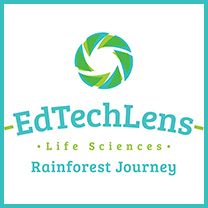
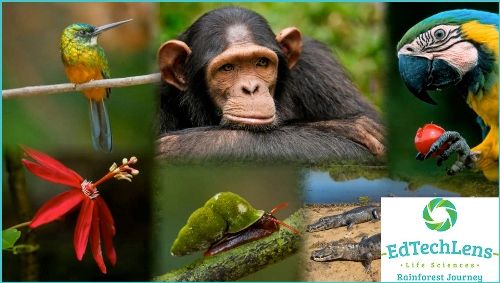











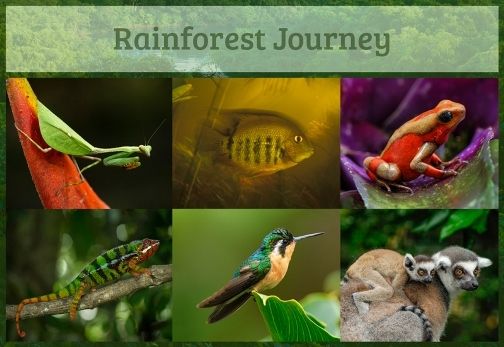


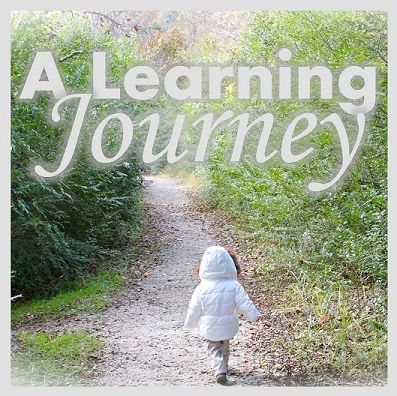







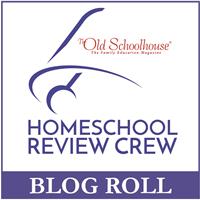






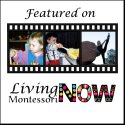






No comments:
Post a Comment